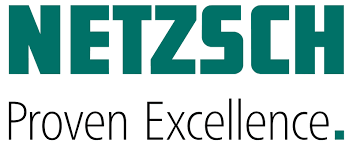BLACKS Composites SRL and NETZSCH Analyzing & Testing have reached the next milestone in their already proven partnership: Enhancing the curing of a CFRP bike rim with a simultaneous huge decrease of the cycle time during cross-linkage. The bike rim was put through hand lay-up technology and a subsequent autoclave curing.
.jpg)
Is Saving Cycle Time with a Better Curing Possible?
Yes, the cycle time was decreased by 46% compared to the cure cycle that was suggested by the material data sheet, using simulation software Kinetics Neo and the data of a differential scanning calorimeter. In addition, a better quality of cure could be accomplished to meet the target curing and avoid the overheating issues of the product.
Collecting Data with a Differential Scanning Calorimeter
The most well-known and widespread thermal analysis method for the characterization of polymers is Differential Scanning Calorimetry (DSC). A reference and a sample are subjected to a controlled heating profile through DSC analysis, enabling changes to be established in the endothermal and exothermal effects of the sample. As a result, reversible and non-reversible phase transitions of a polymer sample can be detected. These are:
- The curing of cross-linking polymers
- The melting and crystallization of semi-crystalline thermoplastics
- The glass-transition temperature
The purpose of the work together with Blacks Srl. was to meet the needs in curing of a thermosetting carbon fiber prepreg for the creation of a bike rim with 95%. In addition, the suggested cycle time of the material data sheet with a total autoclave time of 480 minutes had to be decreased.
To qualify the achieved degree of cure level, DSC measurements have been carried out by utilizing the DSC214 Polyma on the uncured resin and the manufactured parts to establish the total heat enthalpy of the material Htot and the residual cure Hres. The degree of cure α can be determined by utilizing these values, as follows:
.jpg)
The DSC measurements have been carried out under dynamic conditions using a temperature ramp of 10 K/min. The whole curing, compared to to the residual cure after creating a bike rim based on the conventional 480 minutes cycle which is suggested by the material data sheet can be observed in the image below.
.jpg)
Using equation (1), the achieved degree of cure is 95.9%.
Thermal analysis measurement data for a minimum of three different heating ramps or at three different isothermal temperatures are inevitable in order to execute kinetic studies. Dynamic ramps at the rates 1, 2, 5 and 10 K/min have been carried out in this instance.
.jpg)
Performing Kinetic Studies and Predicting the Material Behavior
The DSC data measured at the four different heating ramps have been uploaded to the NETZSCH Kinetics Neo software in order to be able to predict the material behavior for different process scenarios. A model-free method to the measurement data utilizing an extremely simple-to-use klick solution is shown in the conversion fit below.
.png)
A newly developed model-free approach, called “numerical optimization” is the mathematics behind the model. It is designed especially for users with no experience in kinetic’s simulation.To avoid overheating and consequent material damage, it has been ensured that the maximum reaction rate of the conventional cycle was limited in the software settings and cannot be exceeded in the new shorter cycle.
Dramatic Reduction in Cycle Time
In this example, combining the powerful Kinetics Neo software and the widely used Differential Scanning Calorimetry, impressively shows how production cycles can be optimized. Material characterization and simulation is much more efficient compared to trial and error manufacturing, and in terms of material and time, can bring the composite industry huge cost savings.
Compared to the conventional curing cycle of the material data sheet, the autoclave manufacturing cycle of the CFRP bike rim of Blacks Srl could be decreased by 46% still meeting the needs of the degree of cure and avoiding overheating at the same time.
| Cycle |
Thermal Cycle |
Durata totale ciclo termico
(min) |
ΔH
(J/g) |
Degree of cure
(%) |
| Prepreg |
total cure |
– |
-223.9 |
100 |
| conventional |
RT-70 °C HR=2.3 °C/min
70-130 °C HR=1.3 °C/min
Isothermal at 130 °C x 270 min
Cooling |
480 |
-9.25 |
95.9 |
| new |
RT-110 °C HR=3 °C/min
Isothermal at 110 x 10 min
110-130 °C HR=3 °C/min
Isothermal at 130 °C x 60 min
Cooling |
260 |
-8.63 |
96.1 |

This information has been sourced, reviewed and adapted from materials provided by NETZSCH-Gerätebau GmbH.
For more information on this source, please visit NETZSCH-Gerätebau GmbH.